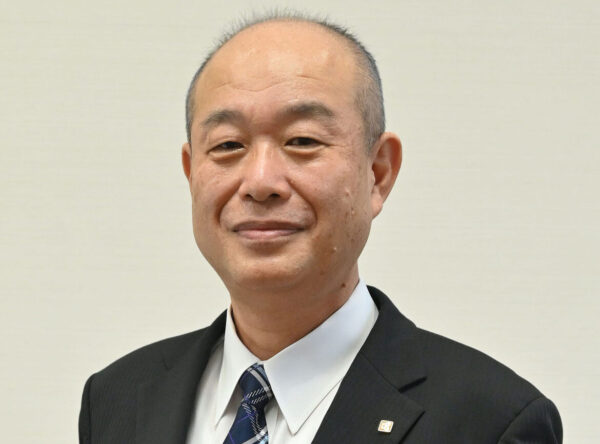Dustin Graupman, senior director of the company’s new Ink Jet Division, aims to raise Kyocera’s inkjet profile.
In June, Kyocera Document Solutions America, Inc. appointed Dustin Graupman as senior director of its new Ink Jet Division. According to a Kyocera press release, this move represents the next step on the strategic roadmap laid out by President and Chief Executive Officer Óscar Sánchez and aligns with Kyocera’s objective of strengthening its position in the inkjet market.
The press release further noted that “With the establishment of its Ink Jet Division, Kyocera is putting in place the infrastructure to ensure that its inkjet product group is even more responsive to market opportunities, better able to support all sales channels, and better able to position the company’s inkjet technology as a value-added solution for customer challenges. Under Graupman’s lead, the new division will chart the course for Kyocera’s future strategic production print initiatives.”
With companies such as Epson and RISO raising the profile of inkjet in the office technology dealer channel, we believe this is an excellent move on Kyocera’s part. It’s been a few years since the introduction of the TASKalfa Pro 15000c, Kyocera’s high-speed cut-sheet inkjet production printer. Although the company has enjoyed some success with the product, it’s about time it showed the channel that it is serious about not only inkjet but production print.
“We dipped our toe in the water with the product and had good success out of the gate,” said Graupman. “Now it’s time to build a mature organization from the inside out to be able to more effectively sell, support, and launch new products, and provide input to the research and development organization for the next generation of products.”
Leveraging Kyocera’s Inkjet Legacy
Kyocera’s biggest advantage in the inkjet segment is its printhead technology, which has enabled other companies to enjoy success in production inkjet, specifically in the roll-fed space. This technology gives Kyocera plenty of credibility in the inkjet world. For Graupman, it’s time to promote this inkjet legacy.
“We haven’t been bold enough in staking claim to being a critical enabling technology that has made this segment of the industry more popular and accessible to a broader range of customers,” he said. “The embodiment of the 15000c is the best evidence of that. We took our own technology and built it into a machine. It’s industrial and reliable. But we need to take more credit for all of the years of being successful in other products.”
Raising Kyocera’s Inkjet Profile
To raise Kyocera’s inkjet profile Graupman and his team will work with some of Kyocera’s direct subsidiaries and cultivate relationships with dealers to service and support them in ways that Kyocera’s traditional organizational structure might not have been able to do as effectively in the past. His team will also assist with marketing.
One area that Graupman is looking to enhance is how Kyocera sells to and supports national accounts. “What you do with MFPs and traditional office equipment is not transferable to the production and inkjet space,” he opined.
The strategy is to focus on the applications that inkjet technology enables, then work backward to the finishing devices and software, as well as the substrates that run on the systems. Equally important is identifying environments where the technology is a good fit.
According to Graupman, the most relevant applications for inkjet in the last decade have been transactional documents and direct mail, followed by books and manuals. He emphasized that the market segments that inkjet technology serves have not changed dramatically. “What has changed is the price points and accessing the benefits of that technology for those applications,” he said.
Graupman’s mission is to condition everybody in the Kyocera organization, including its channel partners, to identify potential customers and cultivate relationships. “It’s all about enabling all the things on the front and the back end of the machine—high-capacity stackers, the right software, the right substrates, and the finishing that presents the output in a manner where it can be processed most efficiently,” said Graupman.
He sees the emergence of more hybrid technical business roles that will be responsible for establishing relationships with finishing partners. This could also involve working with substrates and application testing so that Kyocera can show customers how their finished pieces will look.
“We’ve endeavored to have a more distributed model placing demo machines across the country in dealers,” said Graupman.
That doesn’t mean there won’t be challenges. “Frankly, it’s hard to establish a center of excellence knowledge base that way, and it’s hard to transfer that knowledge effectively,” observed Graupman. “We are looking at ways that we can build those capabilities inside the inkjet business and support and replicate that as the business grows in areas that make logical sense.”
That knowledge base that Graupman references will likely include success stories and testimonials that highlight the benefits of the 15000c and inkjet technology, helping its resellers better understand where the product fits. For instance, if it’s an in-plant in California that’s printing custom math curriculum workbooks in a county-based school district, Kyocera wants to create materials that tell that story effectively so that other channels and other regions of the country can use those testimonials to tell the story to their local market.
“My group is focused on mining those stories and telling them in a way that identifies the [appropriate] market segments and helps channels in other regions mirror that success,” said Graupman.
Learning from Dealers
Since joining the company in June, Graupman has spent a fair amount of time meeting dealers, including some of the largest dealers and dealer organizations in the country. The purpose is to understand their needs and how they position their production printers. He also wants to learn what products are in their production print portfolio and how Kyocera can support its products as well or better than its competitors.
It must be a challenge hitting the road, meeting with dealers, and talking about Kyocera’s inkjet product lineup, which is limited to a single product even though Graupman acknowledged that more products are coming. The challenge for now, he said, is twofold.
“One is getting mindshare with larger dealers that have an established presence in inkjet. They all see the unique value and opportunity in the solution. It’s how we identify those segments, how we position a unique value proposition to them, how we sell to them, and how we understand the challenges that this product might help them overcome. Ultimately, it’s about placing machines and seeing customers successfully run them.”
He maintained that dealers have a pretty good understanding of the product, running a demo, and producing samples. “But it’s really understanding how this is a solution for a wide but disparate set of problems in production print houses,” said Graupman.
Beyond the Product
According to Graupman, dealers and end-customers don’t just want to buy a product, especially because it is a huge undertaking to add a new product or a new partner. “They want to buy into a partnership, a technology roadmap, and understand where you’re going with the technology and make sure you’re in it for the long haul,” he said.
And with the establishment of the Ink Jet Division, Kyocera is signaling that it is in it for the long haul. Graupman also views the Ink Jet Division’s role as being in front of the awareness and consideration part of the sales process before there is direct engagement. “We need to be better at that so that [prospects] are aware of us and they’re considering us on an equal level with other more mature solutions out there,” he said. “That should manifest itself in a more robust pipeline of opportunities.”



